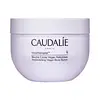What's inside
What's inside
 Key Ingredients
Key Ingredients

 Benefits
Benefits

 Concerns
Concerns

 Ingredients Side-by-side
Ingredients Side-by-side

Water
Skin ConditioningButylene Glycol
HumectantHamamelis Virginiana Water
AstringentPEG-40 Hydrogenated Castor Oil
EmulsifyingSodium PCA
HumectantBetaine
HumectantSorbitol
HumectantGlycine
BufferingAlanine
MaskingProline
Skin ConditioningSerine
MaskingThreonine
Arginine
MaskingLysine
Skin ConditioningGlutamic Acid
HumectantRice Amino Acids
Skin ConditioningZinc Aspartate
Skin ConditioningDipotassium Glycyrrhizate
HumectantPEG-12 Dimethicone
Skin ConditioningPhospholipids
Skin ConditioningTocopheryl Acetate
AntioxidantRetinyl Palmitate
Skin ConditioningAscorbyl Palmitate
AntioxidantAscorbic Acid
AntioxidantChitosan
Propyl Gallate
AntioxidantBifidobacterium/Bitter Orange Flower Extract Ferment Extract Filtrate
Skin ConditioningEchinacea Purpurea Extract
MoisturisingCitrus Aurantium Dulcis Fruit Extract
MaskingSodium Polyaspartate
HumectantBenzophenone-4
UV AbsorberPolyquaternium-4
Disodium EDTA
Citric Acid
BufferingPhenoxyethanol
PreservativeCaprylyl Glycol
EmollientChlorphenesin
AntimicrobialLimonene
PerfumingLinalool
PerfumingCitrus Aurantium Dulcis Peel Oil
MaskingOrbignya Oleifera Seed Oil
EmollientCitrus Grandis Peel Oil
MaskingFerula Galbaniflua Resin Oil
AntimicrobialParfum
MaskingCI 42053
Cosmetic ColorantWater, Butylene Glycol, Hamamelis Virginiana Water, PEG-40 Hydrogenated Castor Oil, Sodium PCA, Betaine, Sorbitol, Glycine, Alanine, Proline, Serine, Threonine, Arginine, Lysine, Glutamic Acid, Rice Amino Acids, Zinc Aspartate, Dipotassium Glycyrrhizate, PEG-12 Dimethicone, Phospholipids, Tocopheryl Acetate, Retinyl Palmitate, Ascorbyl Palmitate, Ascorbic Acid, Chitosan, Propyl Gallate, Bifidobacterium/Bitter Orange Flower Extract Ferment Extract Filtrate, Echinacea Purpurea Extract, Citrus Aurantium Dulcis Fruit Extract, Sodium Polyaspartate, Benzophenone-4, Polyquaternium-4, Disodium EDTA, Citric Acid, Phenoxyethanol, Caprylyl Glycol, Chlorphenesin, Limonene, Linalool, Citrus Aurantium Dulcis Peel Oil, Orbignya Oleifera Seed Oil, Citrus Grandis Peel Oil, Ferula Galbaniflua Resin Oil, Parfum, CI 42053
Water
Skin ConditioningButyrospermum Parkii Butter Extract
Skin ConditioningGlycerin
HumectantCoco-Caprylate/Caprate
EmollientVitis Vinifera Seed Oil
EmollientC10-18 Triglycerides
EmollientHexyldecyl Stearate
EmollientIsocetyl Stearate
EmollientOctyldodecyl Myristate
EmollientSucrose Distearate
EmollientSucrose Stearate
EmollientBalanites Roxburghii Seed Oil
Skin ConditioningPrunus Amygdalus Dulcis Oil
Skin ConditioningSaccharide Isomerate
HumectantPolyacrylate Crosspolymer-6
Emulsion StabilisingCaprylyl Glycol
EmollientEthylhexylglycerin
Skin ConditioningPotassium Sorbate
PreservativeXanthan Gum
EmulsifyingTocopherol
AntioxidantHelianthus Annuus Seed Oil
EmollientSodium Phytate
Citric Acid
BufferingSodium Citrate
BufferingParfum
MaskingWater, Butyrospermum Parkii Butter Extract, Glycerin, Coco-Caprylate/Caprate, Vitis Vinifera Seed Oil, C10-18 Triglycerides, Hexyldecyl Stearate, Isocetyl Stearate, Octyldodecyl Myristate, Sucrose Distearate, Sucrose Stearate, Balanites Roxburghii Seed Oil, Prunus Amygdalus Dulcis Oil, Saccharide Isomerate, Polyacrylate Crosspolymer-6, Caprylyl Glycol, Ethylhexylglycerin, Potassium Sorbate, Xanthan Gum, Tocopherol, Helianthus Annuus Seed Oil, Sodium Phytate, Citric Acid, Sodium Citrate, Parfum
Ingredients Explained
These ingredients are found in both products.
Ingredients higher up in an ingredient list are typically present in a larger amount.
Caprylyl Glycol is a humectant and emollient, meaning it attracts and preserves moisture.
It is a common ingredient in many products, especially those designed to hydrate skin. The primary benefits are retaining moisture, skin softening, and promoting a healthy skin barrier.
Though Caprylyl Glycol is an alcohol derived from fatty acids, it is not the kind that can dry out skin.
This ingredient is also used as a preservative to extend the life of products. It has slight antimicrobial properties.
Learn more about Caprylyl GlycolCitric Acid is an alpha hydroxy acid (AHA) naturally found in citrus fruits like oranges, lemons, and limes.
Like other AHAs, citric acid can exfoliate skin by breaking down the bonds that hold dead skin cells together. This helps reveal smoother and brighter skin underneath.
However, this exfoliating effect only happens at high concentrations (20%) which can be hard to find in cosmetic products.
Due to this, citric acid is usually included in small amounts as a pH adjuster. This helps keep products slightly more acidic and compatible with skin's natural pH.
In skincare formulas, citric acid can:
While it can provide some skin benefits, research shows lactic acid and glycolic acid are generally more effective and less irritating exfoliants.
Most citric acid used in skincare today is made by fermenting sugars (usually from molasses). This synthetic version is identical to the natural citrus form but easier to stabilize and use in formulations.
Read more about some other popular AHA's here:
Learn more about Citric AcidParfum is a catch-all term for an ingredient or more that is used to give a scent to products.
Also called "fragrance", this ingredient can be a blend of hundreds of chemicals or plant oils. This means every product with "fragrance" or "parfum" in the ingredients list is a different mixture.
For instance, Habanolide is a proprietary trade name for a specific aroma chemical. When used as a fragrance ingredient in cosmetics, most aroma chemicals fall under the broad labeling category of “FRAGRANCE” or “PARFUM” according to EU and US regulations.
The term 'parfum' or 'fragrance' is not regulated in many countries. In many cases, it is up to the brand to define this term.
For instance, many brands choose to label themselves as "fragrance-free" because they are not using synthetic fragrances. However, their products may still contain ingredients such as essential oils that are considered a fragrance by INCI standards.
One example is Calendula flower extract. Calendula is an essential oil that still imparts a scent or 'fragrance'.
Depending on the blend, the ingredients in the mixture can cause allergies and sensitivities on the skin. Some ingredients that are known EU allergens include linalool and citronellol.
Parfum can also be used to mask or cover an unpleasant scent.
The bottom line is: not all fragrances/parfum/ingredients are created equally. If you are worried about fragrances, we recommend taking a closer look at an ingredient. And of course, we always recommend speaking with a professional.
Learn more about ParfumWater. It's the most common cosmetic ingredient of all. You'll usually see it at the top of ingredient lists, meaning that it makes up the largest part of the product.
So why is it so popular? Water most often acts as a solvent - this means that it helps dissolve other ingredients into the formulation.
You'll also recognize water as that liquid we all need to stay alive. If you see this, drink a glass of water. Stay hydrated!
Learn more about Water